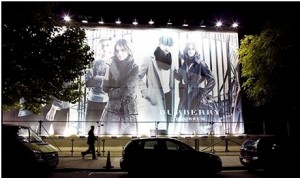
Donna Sapolin
I love the fall/winter season in New York. Everything seems to come back to life once September rolls around and the arts kick into high gear, igniting the city with blasts of creative energy. People begin flocking to music, theater and dance performances.
A few weeks ago, I went to see the San Francisco Ballet (SFB) at Lincoln Center’s David H. Koch Theater during its first visit to New York in five years. The SFB is America’s oldest professional company and has achieved great acclaim for its overall excellence and emphasis on new ballet choreography.
The thrilling three-part program I saw - a mixed bill of two classically oriented dances (“Trio” and “Suite en Blanc”) and a contemporary one (“Ghosts”) - was utterly captivating.
Ballet Is a Microcosm of Successful Approaches to Work
Are you familiar with the famed song “At the Ballet” from the award-winning Broadway musical, A Chorus Line? It depicts ballet (and ballet lessons) as an antidote to a problem-riddled childhood because, as the chorus says, “Everything was beautiful at the ballet.”
Well, everything is beautiful at the ballet. But that exquisite perfection is the result of a great deal of creative intelligence, effort, and teamwork.
As I watched and admired SFB’s virtuosic performances complete with lush costumes, sets, and music, it struck me that the total package encapsulated all the values and steps I believe make for career success. Here they are:
1. Listen intently. Ballet dancers hinge every move and gesture on the musical score’s rhythm and emotion and the choreographer’s instruction. To do otherwise would result in failure.
We tend to forget how much we can learn by simply paying attention to others’ concepts and expert guidance, particularly in these tech-driven times when so much is competing for our attention. Lending an ear and being truly “present” to what others are saying are vital for learning new skills and absorbing valuable ideas at work. They’re also great ways to make your colleagues feel respected and spur their productive cooperation. So, lean in, make eye contact, speak less and listen conscientiously.
2. Take many steps. Top ballet dancers don’t think in terms of reducing the number of steps in the dances they perform nor do they believe they can cut back on their practice and rehearsal sessions and still manage to excel on stage. The SFB website explains: “Dancers’ lives are full of daily ballet technique classes and rehearsals. A typical workday can start with an hour-long class, followed by four to six hours of rehearsal, often concluding with a two-hour evening performance.
Read More


 Margie Johnson Reese
Margie Johnson Reese





























































